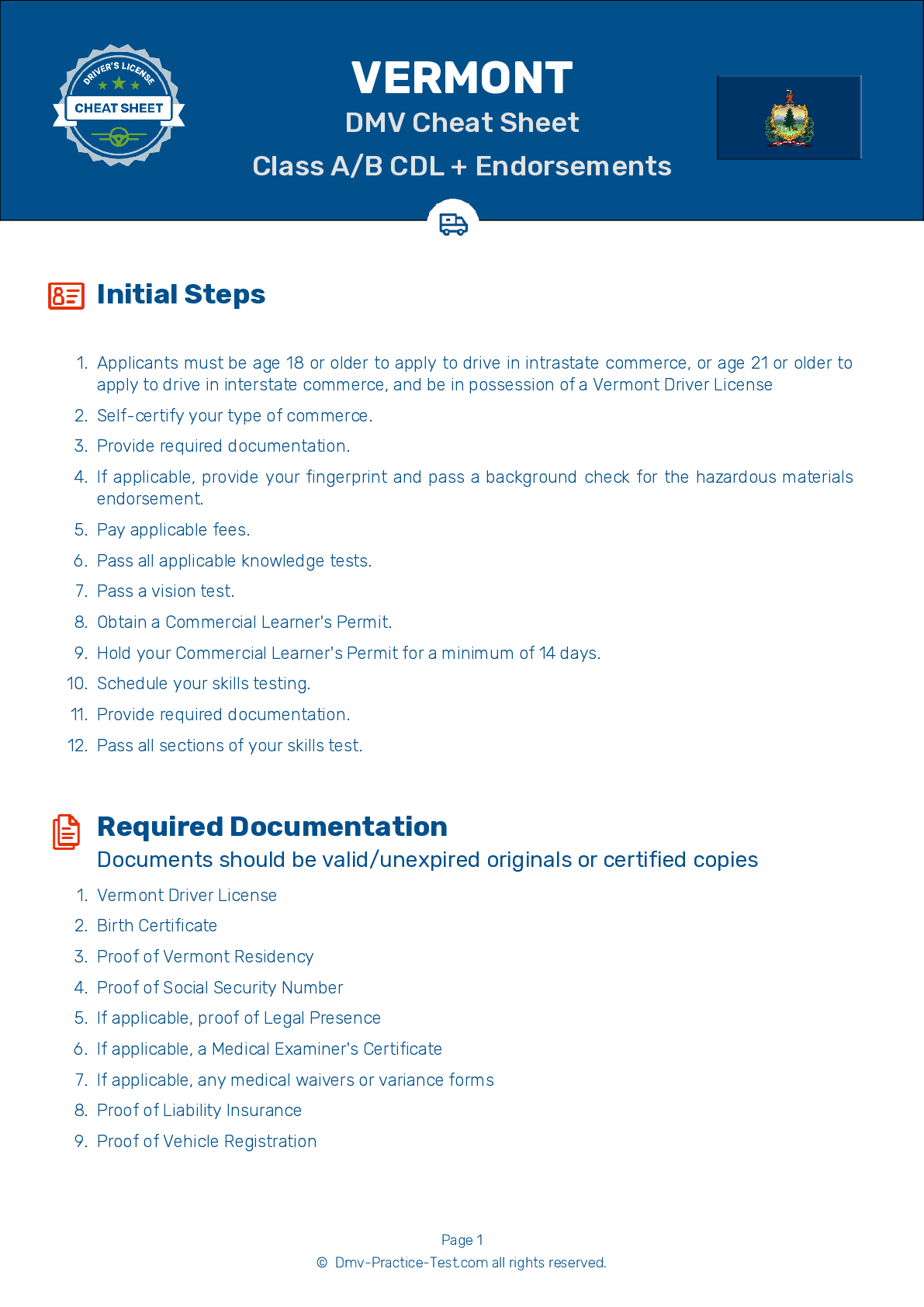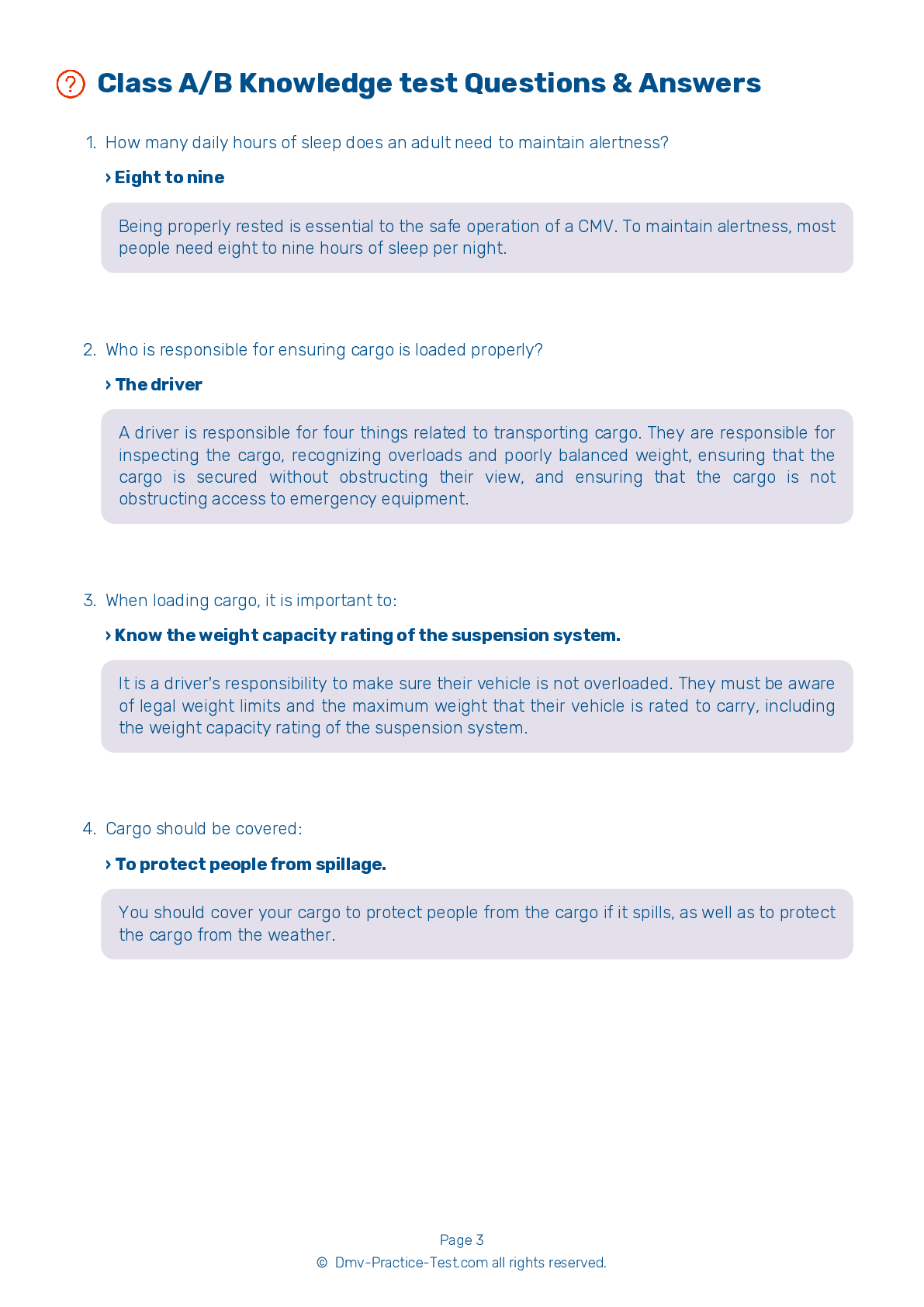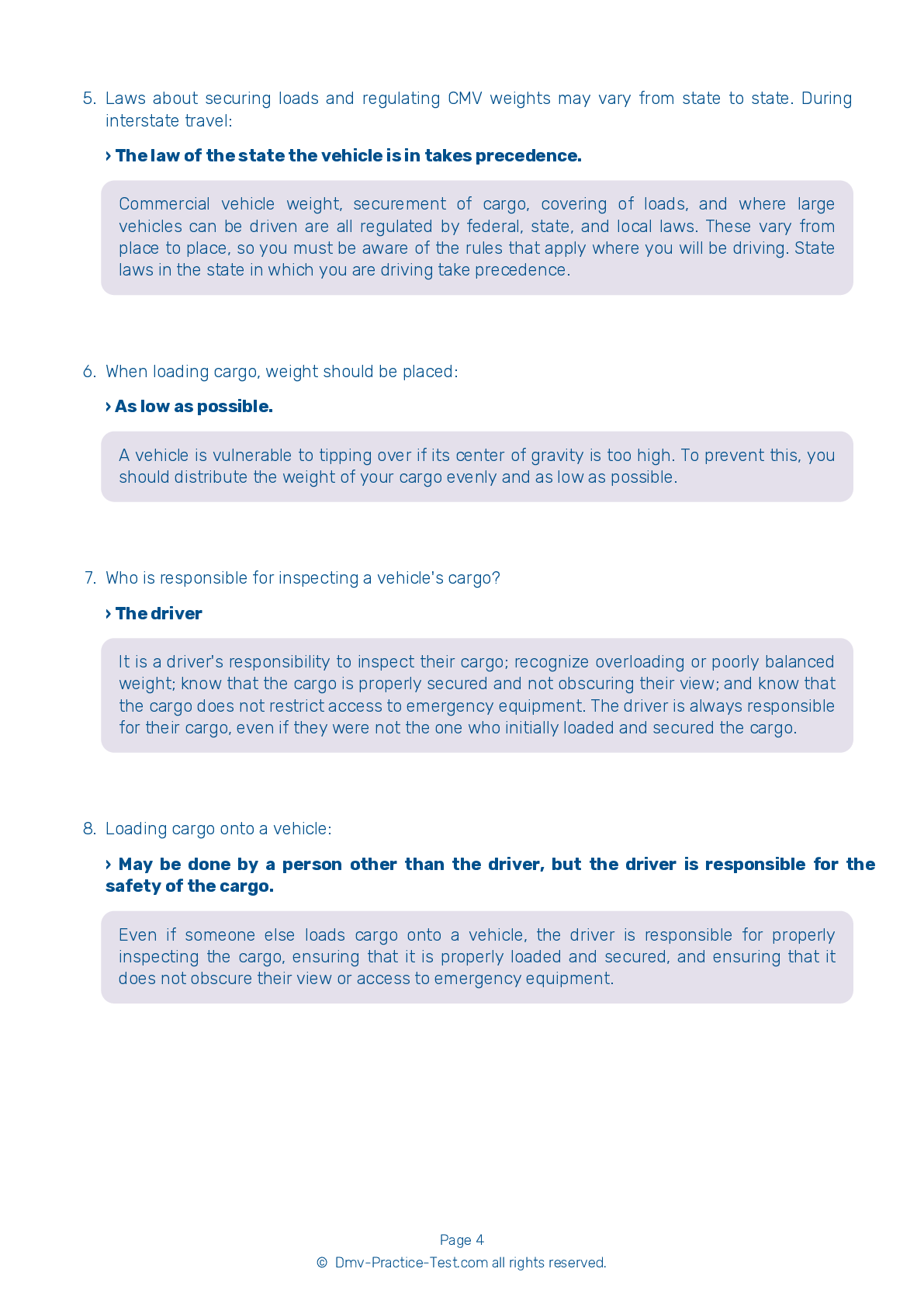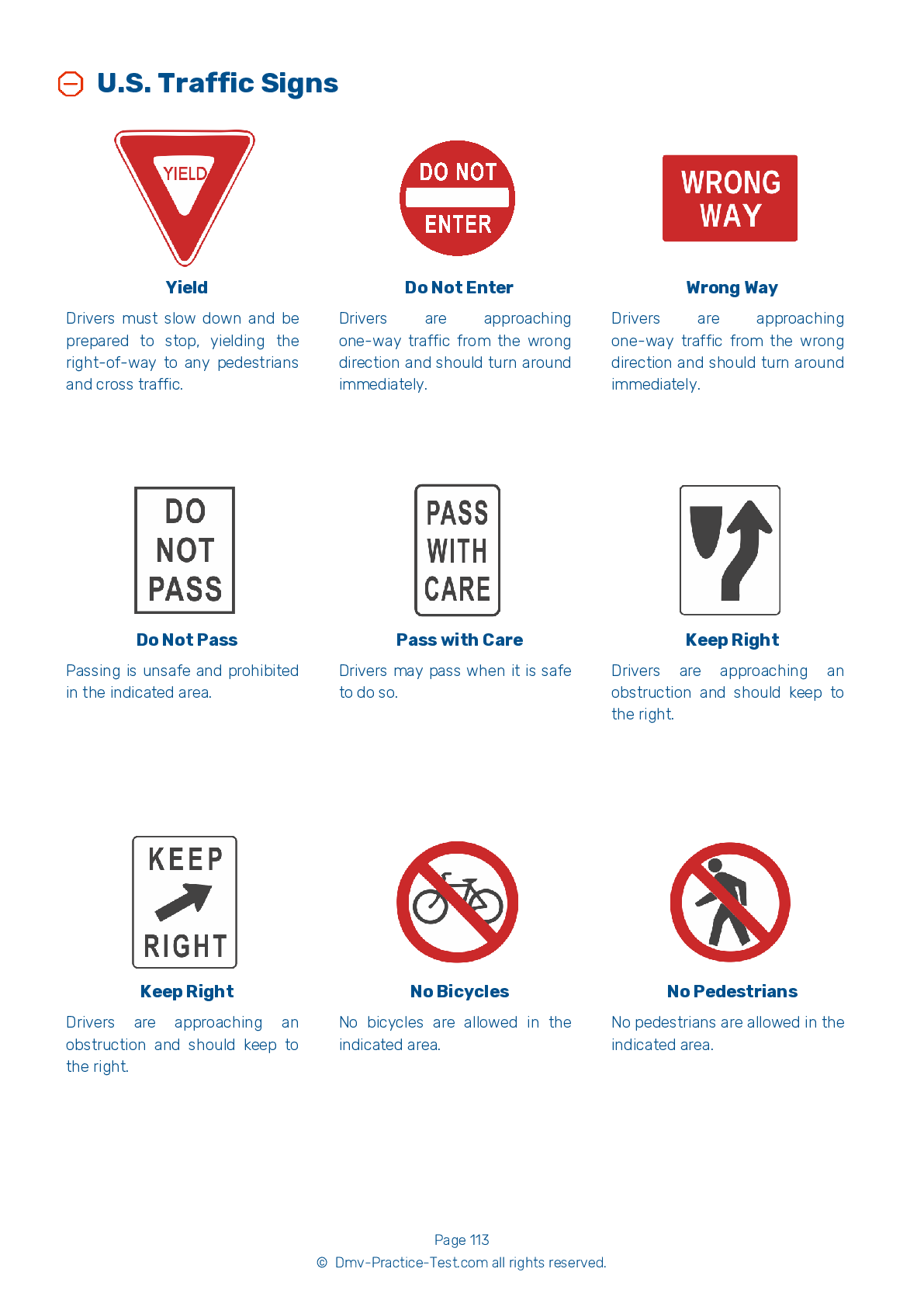Class A Driving Test | Vermont 2025 #1 Page 2 of 7
Train for FREE online with our Vermont class A license test. The official exam test consists of several obligatory parts, with all of them checking your knowledge of different blocks of road rules. If you need to obtain a VT CDL class A permit in 2025, practice as much as possible. Free sample tests published on our website will help you check and improve your knowledge and boost your grades. Please bear in mind that CDL class A requirements may vary from state to state.
8 . On a slippery surface, stopping distance:
A vehicle's regular stopping distance increases on slippery surfaces because there is less available traction.
9 . An applicant for a CDL must be a minimum of:
In Vermont, you must be at least 18 years old to obtain a CDL. To be licensed to operate in interstate commerce, you must be at least 21 years old.
10 . To operate a commercial motor vehicle in interstate commerce, a driver must be at least:
In Vermont, you must be at least 18 years old to obtain a CDL. To be licensed to operate in interstate commerce, you must be at least 21 years old.
11 . An applicant must hold a Commercial Learner’s Permit (CLP) for a minimum of ____ before taking the road test.
You must have a Commercial Learner's Permit (CLP) for a minimum of 14 days before you can take the CDL skills test. A CLP will be valid for 180 days.
12 . When traveling down a steep downgrade:
On long and/or steep downgrades, you should primarily use engine braking to control the speed of your vehicle. Use your brakes only as a supplement to this effect.
13 . Foundation brakes are used:
Foundation brakes are used on each wheel of a CMV. The most common type of foundation brake is the s-cam drum brake.
14 . A cracked rim should be:
A driver should inspect wheels before a drive, specifically looking for damage on the wheels and rims. Wheels or rims that have had welding repairs are not safe for use.
See the exact questions that will be on the 2025 Vermont DMV exam.
99.2% of people who use the cheat sheet pass the FIRST TIME
Lillian MCcranie explains how our CDL study guide was helpful in passing the exam and recommends it to everyone.
Cameron tells us how he purchased the CDL exam, and found it to be a useful tool which helped him pass the exam and find a job.



